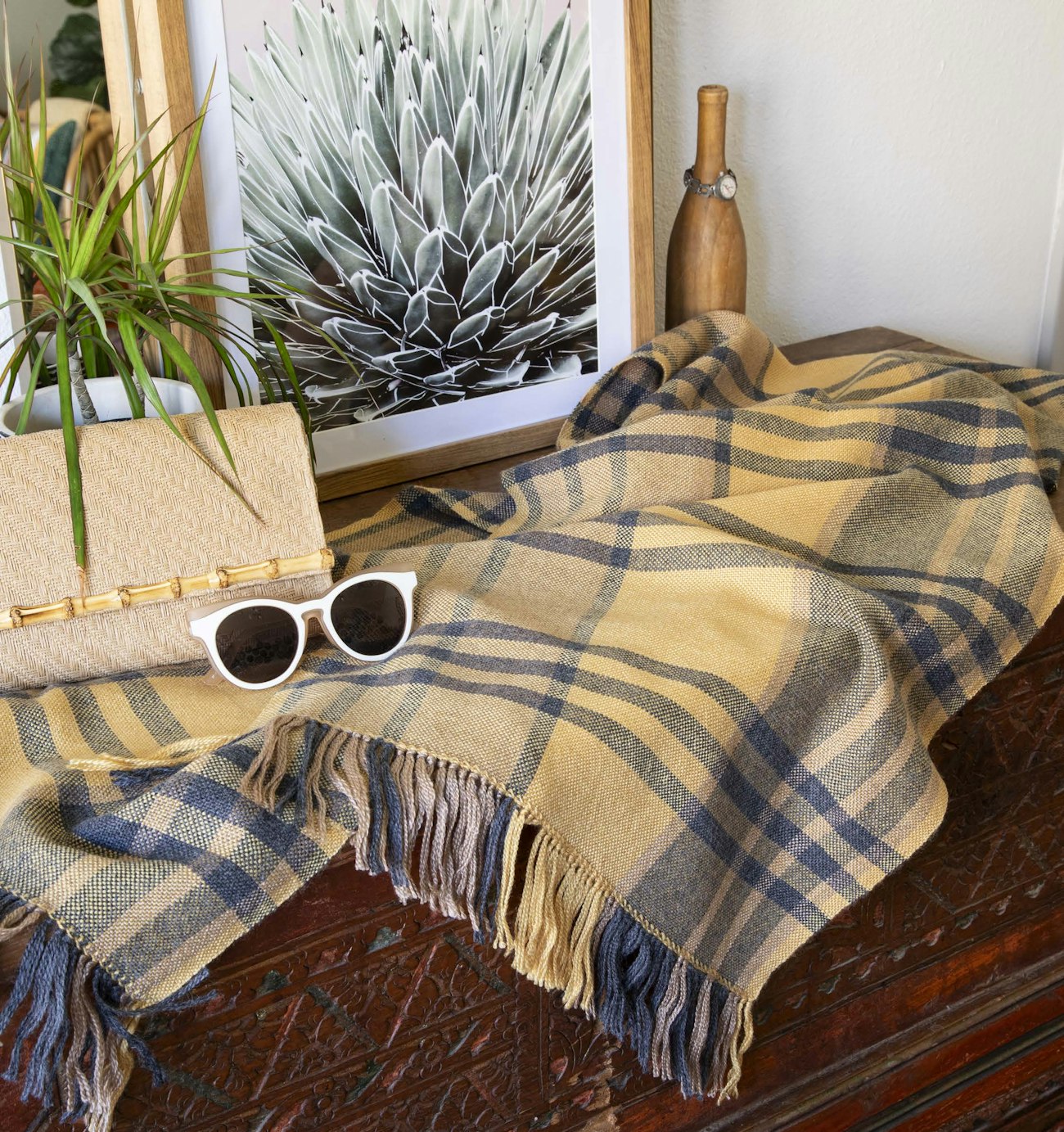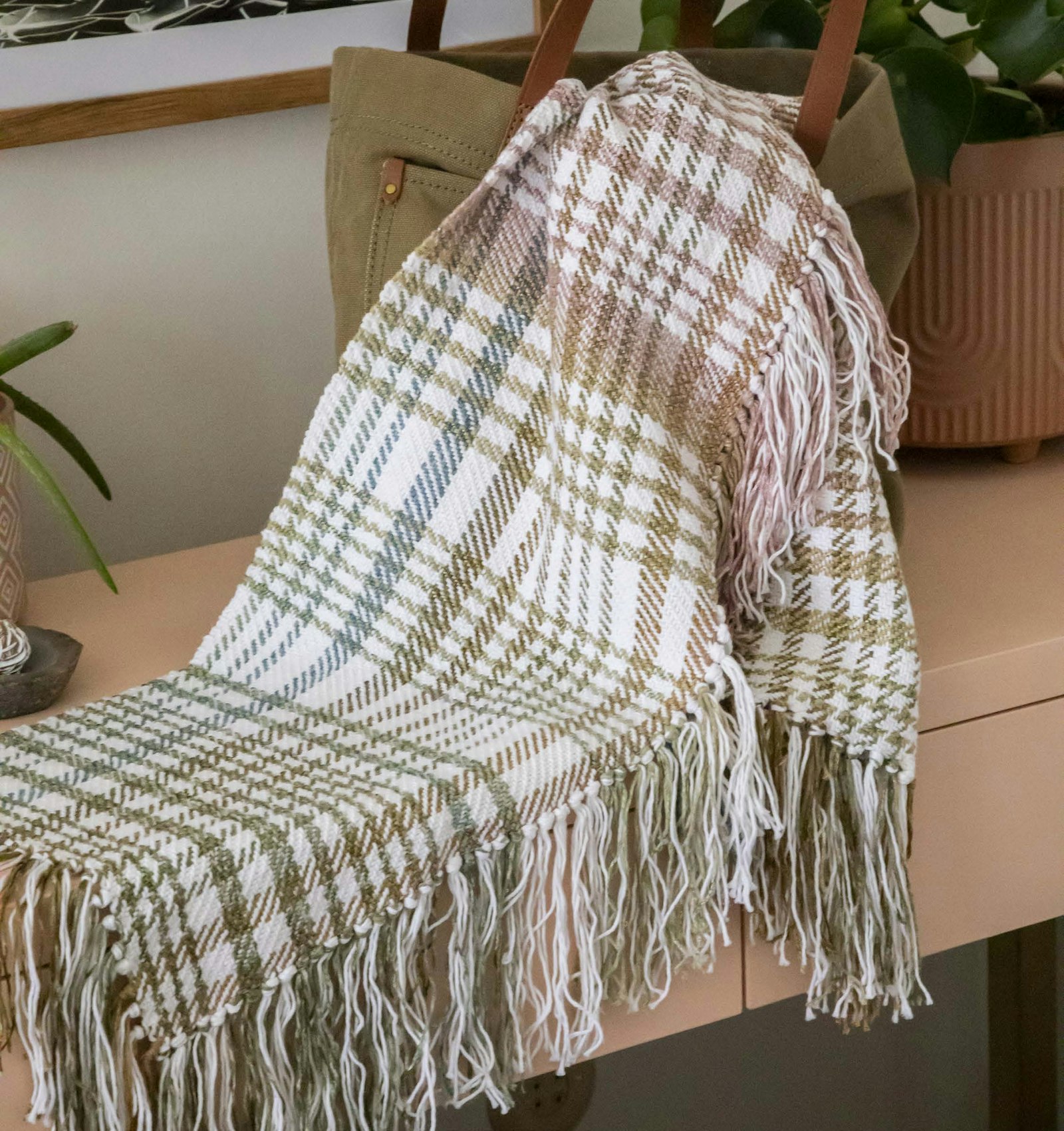Whenever I hear a rigid-heddle loom referred to as a “beginner’s loom,” I can’t help but shake my head in disappointment, for while the loom itself might be simple, it is capable of producing complex cloth. If anything, the rigid-heddle loom is an everybody sort of loom—so I’m here to dispel some rigid-heddle weaving myths.
Myth 1: It’s only for beginners
Let’s start with the thing I hear the most, that the rigid-heddle loom is a gateway loom to “real weaving.” Just typing that makes me cringe. It’s true, the rigid-heddle loom is perfect for people new to weaving. It is significantly less expensive than a multishaft loom, takes up far less space, and isn’t complicated or intimidating to those just learning the difference between warp and weft. Saying something is good for beginners, though, doesn’t mean it’s automatically useless for more advanced weavers. Sometimes you want to weave a project but don’t want to spend the hours needed to wind and warp a floor loom. Sometimes you want to just play with color and texture. Sometimes you want to weave outside. For all those times, there’s the rigid-heddle loom.
Myth 2: It only produces “simple” cloth
This one always makes me roll my eyes. The rigid-heddle loom is a very simple loom that’s set up to weave plain weave, but a simple loom does not mean simple cloth. Backstrap looms are very simple looms, and yet they are used to produce some of the most intricate weaving out there. Rigid-heddle looms make hand manipulation of threads much easier, and with the aid of a simple pick-up stick or two, you can create anything from basic twill patterns to structures and designs that would take dozens of shafts. You can also use hand-manipulation and pick-up techniques to create warp or weft floats, Danish medallions, rya, Brooks bouquet, and other wonderful designs.
 Shilpa Nagarkar's Sunshine on Your Shoulders Scarf combines a subtly asymmetric design with plain weave to create cloth you just want to reach out and touch.
Shilpa Nagarkar's Sunshine on Your Shoulders Scarf combines a subtly asymmetric design with plain weave to create cloth you just want to reach out and touch.
Myth 3: Plain weave is boring
Okay, so this is less a rigid-heddle myth and more of an all-of-weaving myth. For some reason, plain weave has become synonymous with boring, similar to vanilla, and I’m sorry, but I love both plain weave and vanilla. Plain weave is a great structure for playing with color—you can weave stripes, plaids, or seemingly complex color-and-weave designs in plain weave. Use plain weave to showcase yarns with fun textures or color variegation. If you think plain weave is boring, then you’re doing it wrong.
Myth 4: You can’t use “real” weaving yarns on a rigid-heddle loom
First off, I just want to say that a real weaving yarn is whatever yarn you choose to weave with, whether it’s a run-of-the-mill 8/2 cotton or a highly textured handspun art yarn. If you can weave with a yarn, it’s a weaving yarn. That said, you can use yarns such as 8/2 cotton on your rigid-heddle loom to weave towels and napkins and whatever else you like. You can even use silks on the rigid-heddle loom. It’s true that “knitting” yarns and fashion yarns work beautifully on rigid-heddle looms, but there is no reason you can’t use other yarns on the rigid-heddle loom, too!
So there you have it, the rigid-heddle loom is a loom for every level of weaver, whether you want to weave nothing but beautiful plain weave or experiment with complex pick-up designs. It’s the kind of loom that you can enjoy and explore for years to come.
You can check out Sara's Fashion Plaid wrap in the library and Shilpa's Sunshine on Your Shoulders Scarf here.
Happy Weaving!
Christina
Originally published 11/21/2018; updated 6/11/2024

